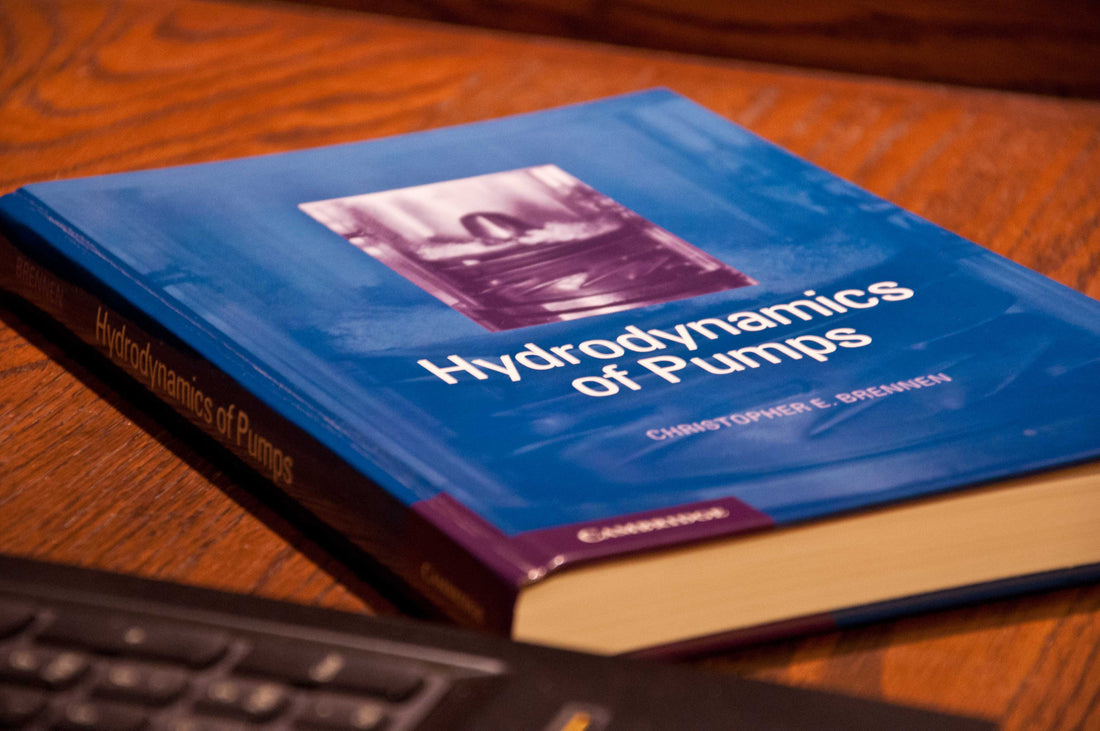
Hydrodynamics of Pumps (2011 edition) – A Book Review
Randal FermanHydrodynamics of Pumps by Christopher E. Brennen was first published in 1994. Aside from my long-time professional acquaintance with the author, what caught my attention in this book are the various technical passages related to rocket propulsion turbomachines, including the Space Shuttle Main Engine. Over the years I would hear about the technical issues with these engines, sometimes from an engineer with direct exposure to them such as Professor Brennen, and it was always interesting to learn what was happening at the very cutting edge of turbomachinery technology.

Hydrodynamics of Pumps 1994 edition was made available online in 2003, for free, and the author solicited readers’ comments.
The overall purpose of Hydrodynamics of Pumps is to serve as a reference for pump experts and advanced students of pump turbomachinery. The book could just as well be titled “Cavitation, Unsteady Flows and Forces,” given that these are its main topics. The first of these phenomena, cavitation, is associated with vapor bubble formation and collapse, mechanical damage, degradation of performance, vibration and noise, while the issues related to unsteady flows and forces are associated with the relatively high density of liquids and resultant dynamic effects on the machine and system.
Right up front in the book’s foreword a complete five-page nomenclature listing is provided. The subscript listing uses a sample variable “Q” to show what each subscripted form looks like.
Here is an example: “QT1 Value at the inlet tip”. In my opinion, this method of showing the entire form is superior to simply listing the subscripts independently.
Chapter 1 Introduction provides the high level overview of the two major subjects of the book, cavitation and unsteady flows. Dimensional relationships in hydraulic turbomachinery are also explained.
Chapter 2 Basic Principles provides an elegantly clear presentation of pump geometry, velocity vectors, blade notation, energy transfer and pump performance. In the early years of my career at Byron Jackson Pump circa 1980 I recall helping to prepare the submittal of Impeller X and Volute A drawings for Cal Tech. Various experimental results using these pump elements are found throughout the book.
Chapter 3 Two-Dimensional Performance Analysis presents both axial and radial cascade analyses, flow deviation angle, vane solidity, slip factors, and viscous effects.
In Chapter 4 Other Flow Features, three-dimensional flow effects, radial equilibrium, prerotation and other secondary flows are presented. Also included is a section on “discharge flow management” covering volutes, diffusers and collectors.
Chapter 5 Cavitation Parameters and Inception covers the parameters used to describe cavitation, cavitation inception, net positive suction head (NPSH), types of impeller cavitation and cavitation inception experimental results. Coverage of pump cavitation technology essentials in this chapter is at least as good as I have seen anywhere else. Moreover, I could stop here and make a case for buying this book just based on the material up through Chapter 5. But there is more.
In the remaining chapters 6 through 10, cavitation bubble dynamics, cavitation damage, cavitation noise, cavitation and pump performance, inducers, cavitation thermal effects, pump vibration, rotating stall, rotating cavitation, surge, auto-oscillation, acoustic resonances, unsteady flow, time domain methods, frequency domain methods, transfer matrices, radial forces, rotordynamic forces, hydrodynamic bearings and seals, damping, cross-coupling and other advanced topics are covered.
It is a big leap from the basic pump concepts and formulas to cutting edge cavitation technologies, analysis of unsteady flows and rotordynamic analytical theory but Brennen deftly manages this transition. The author begins each topic with a concise but clear presentation of basic concepts and principles and continues on to cover the subject matter in depth, in a well-organized volume.
I highly recommend this book to the newcomer as well as to the expert who wants to better his understanding of pumps. Hydrodynamics of Pumps is an especially valuable and authoritative reference for engineers involved in pump cavitation issues, unsteady flow-related problems and pump rotordynamics.

2 comments
Paul, Fish and marine mammals have had lots of evolutionary time to optimize hydrodynamic shape and minimize drag. In a much shorter space of time, man has developed remarkably fast attack submarines, hydrofoils and other marine devices. Look to the natural and man-made designs and you may find yourself close to a suitable answer. Randal
can some answer me which is the most hydrodynamic shape to drag through seawater (underwater)